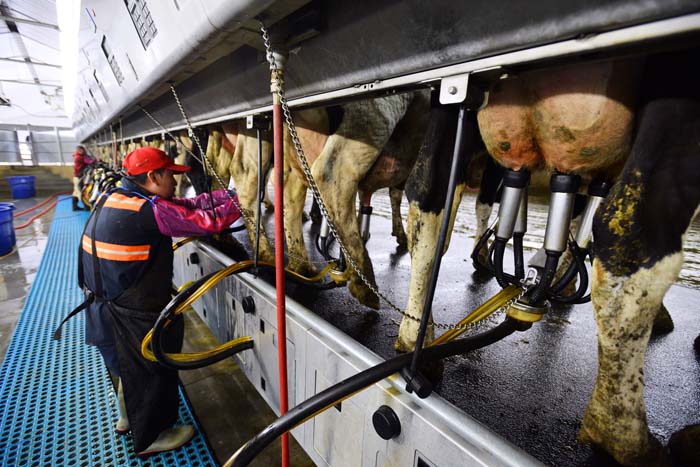Revised Oregon CAFO bill clears key hurdle, others remain
Published 7:45 am Wednesday, May 24, 2023

- Workers attach milking units to the udders of organic dairy cows in the milking barn April 26, 2016, at the Cold Springs Dairy east of Hermiston. A key committee in the 2023 Oregon legislative session has approved new restrictions on concentrated animal feeding operation, though the bill still faces major hurdles.
SALEM — New and expanding “confined animal feeding operations” in Oregon would face tighter water restrictions under legislation approved by a key committee, though the proposal’s been scaled back.
Trending
Senate Bill 85 would limit new and expanding CAFOs to using 12,000 gallons per day under the state’s “stockwater exemption,” which allows groundwater withdrawals for livestock without a water rights permit.
However, the 12,000-gallon limit to the stockwater exemption would expire in four years under the newest version of SB 85, passed unanimously May 23 by the Senate Rules Committee, which diverges from the proposal discussed at a public hearing earlier this month.
Oregon faces many questions about water management in coming years, so the sunset provision will allow for adjustments while also instilling some urgency in those negotiations, said Sen. Michael Dembrow, D-Portland, who crafted the new CAFO rules.
Trending
Applicants for CAFO permits under SB 85 would need to submit water-supply plans to state regulators, who may require them to install water metering devices, keep water usage records and curb expansion plans in some circumstances.
Large CAFOs would have to notify surrounding residents of their plans, consult with state regulators before construction and undergo inspections before bringing in livestock under the bill.
Setbacks or buffers between CAFOs and residential structures could be required by local governments, which would also need to affirm that planned facilities are compatible with zoning requirements.
The bill’s recent version provides more flexibility to local governments compared to the previous version, which required CAFOs to be located at least 100 yards from neighboring properties statewide, said Dembrow.
“We are giving them that flexibility,” he said.
However, local governments would not have the ability to prohibit CAFOs within a half-mile of schools or retirements homes, nor would the bill prohibit facilities within a half-mile of fish-bearing streams, as the earlier version proposed.
State environmental regulators would still have to summarize the implications of an upcoming federal report on CAFO air emissions within six months of its completion.
Unlike the bill’s earlier version, though, state farm regulators would not have to review the best management practices for animal welfare at CAFOs.
The Senate Rules Committee’s approval may be a moot point if a protest by Republican lawmakers continues to deny the Senate a quorum, blocking the passage of SB 85 and other bills voted out of committee.
For now, the bill is headed to the budget-setting Joint Ways and Means Committee, which must sign off on the $2.35 million that state farm and environmental regulators will spend to implement the bill over the next four years.
After several rancorous public hearings over the original language of SB 85, which would have imposed a moratorium on large CAFOs, the newest version of the legislation received cautious bipartisan praise during the May 23 committee vote.
The state government should generally be careful about making rapid changes to agricultural regulations but the newest version of SB 85 finds a reasonable middle ground, said Sen. Elizabeth Steiner, D-Portland.
“I remain concerned about the impact on agriculture but I think you’ve arrived at an elegant solution,” she said.
The committee’s chair, Sen. Kate Lieber, D-Beaverton, said she agreed “the agricultural community has regulatory fatigue” but praised the bill’s emphasis on water management.
“You have struck a balance here,” she said.









